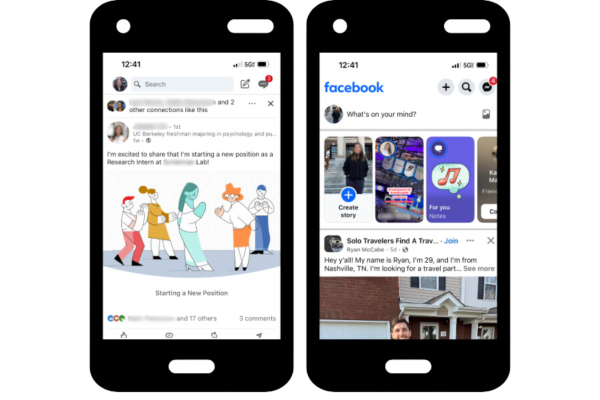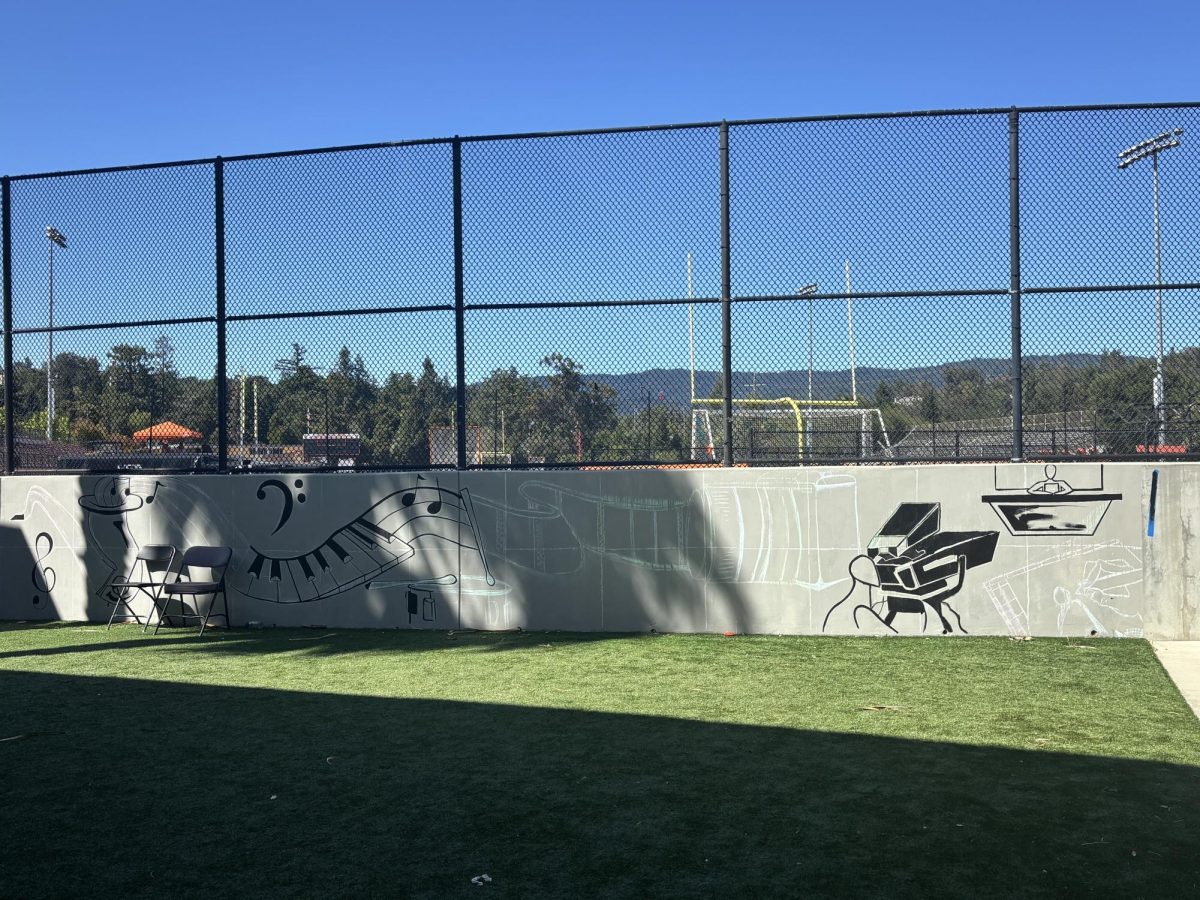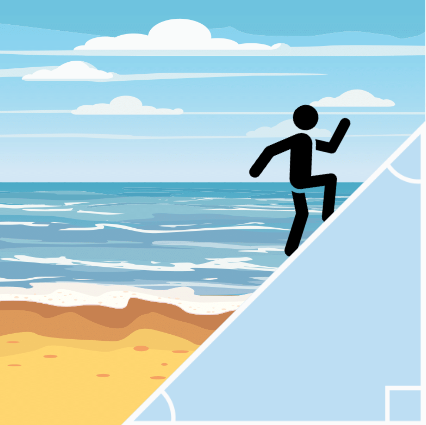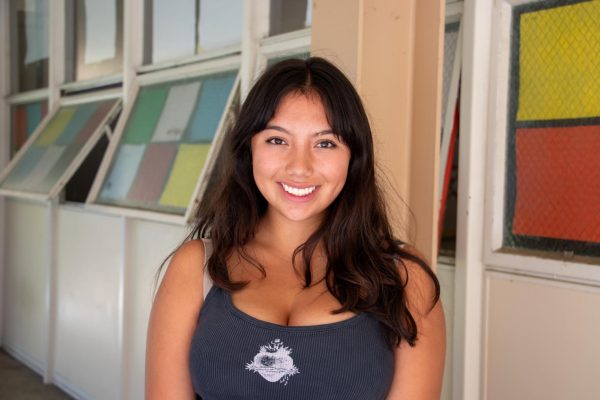LinkedIn usage has been growing steadily since 2010 with over one billion users in 2024, according to Business of Apps. Since its launch in 2003, LinkedIn connects professionals and enhances economic opportunity. LinkedIn generally requires users to be above the age of 16 and at the same time hosts guides like “LinkedIn Profile Tips for High School Students.”
At the intersection of online safety and teenage ambition lies LinkedIn. High school students like senior Caden Morey report that LinkedIn’s intended usage does not fully align with how high schoolers today use it. He created his LinkedIn account this past summer.
“I think now there’s a lot more emphasis on the social media aspect of [LinkedIn],” Morey said. “People post things instead of it being a way for people to connect for job opportunities.”
As Morey described, the LinkedIn homepage can be filled with tips for hiring, leading companies, artificial intelligence applications, interview guides and internship opportunities. The layout and color scheme of the posts somewhat resembles the Facebook homepage. With Facebook usage declining in younger generations, young people focus on their own profile, and stay away from the LinkedIn homepage, sophomore Peter Clandinin explained. Their emphasis is more on their own profile as a digital resume.

“If you’re applying to internships or volunteering, it’s good to keep track of your records,” Clandinin said.
Clandidn first made his LinkedIn profile during his freshman year at age 14. He saw it as a way to display achievements and potential community service. According to Clandinin, several members of the robotics team—also known as Team 100 Wildhats—also have LinkedIn profiles.
“I’m hoping to do an internship this fall at Stanford for engineering,” Clandinin said.
As echoed by other students, a LinkedIn profile can put a student’s best foot forward when it’s the first search result of their name. Sophomore Camran Zamanian saw the potential of LinkedIn as harmful to young people.
“If someone looks you up, they get to know a lot about you [with LinkedIn],” Zamanian said. “[It] is a little creepy.”
Zamanian said that other social media platforms, like Instagram, can easily give the information needed to find someone’s LinkedIn. People can combat the public nature of their LinkedIn by adjusting their privacy settings. LinkedIn suggests a profile photo, background, bold headline, professional summary, work experience, education, media samples/portfolio, relevant skills and recommendations to make a “good” profile.
“I have to spend way more time on [my profile], to be honest,” junior Vasili Morrison said.
He explained that he created his LinkedIn in one afternoon, but is looking forward to adding more to it. Being an upperclassman and closer to joining the workforce, Morrison engages with LinkedIn in a conventional sense. He was able to connect with a guest speaker who visited his engineering class.
“There was this guy who does crazy integration at some [car] braking company,” Morrison said. “I got his LinkedIn and I was able to give mine to him.”
Morrison views these features as ways to connect with people in fields that interest him. He also touched on his future career, in regards to LinkedIn.
“You’re probably gonna need it to connect with people depending on your job area,” Morrison said. “Why not start early?”
The usefulness of LinkedIn can depend on the progression of one’s academic or professional journey. Zamanian and Morrison’s contrasting views on LinkedIn may be attributed to their difference in age and difference in career progression. Zamanian kept an open mind on LinkedIn, explaining that a more appropriate age for creating a profile would probably be 17 to 18 years old.
“In the future, as an adult, [I’ll probably get LinkedIn],” Zamanian said. “As a child, [I] probably [will] not.”
The inevitability of getting on LinkedIn echoed through junior Kiara Arai. Even videos on platforms like TikTok push the idea that professional/academic success and LinkedIn are closely tied.
“Do I have a choice [on getting LinkedIn]?” Arai said. “I feel like once I get a job, I don’t really have a choice.”
Arai did not want to get a LinkedIn account but rejected it for different reasons from Zamanian. She typically uses it to check the background of different authors in her English class, in order to support her arguments in essays.
“I have to find out where [the author] went to university [so] I go to LinkedIn,” Arai said. “Then it doesn’t even give me access, 10 times out of 10.”
Accessing information on LinkedIn can be limited by whether or not you have an account. People without a LinkedIn account will see a message pop-up that says “View [Name’s] full profile” with an option to log in or create an account.
“After I get on LinkedIn one time, it sends me emails for the next two months,” Arai said.
Arai faced a trade-off between getting the information she needed and an inbox flooded with emails. These emails, often regarding LinkedIn News, serve little interest to many users, but Morey explained that he does not send all of them to spam. Behind its often bothersome features, LinkedIn does appear to complete its function of creating economic opportunity.
“If you are looking for a specific job, it notifies you if there [are] opportunities for that,” Morey said.






